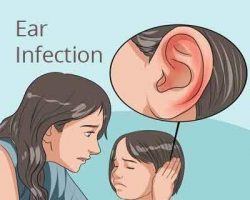- Home
- Editorial
- News
- Practice Guidelines
- Anesthesiology Guidelines
- Cancer Guidelines
- Cardiac Sciences Guidelines
- Critical Care Guidelines
- Dentistry Guidelines
- Dermatology Guidelines
- Diabetes and Endo Guidelines
- Diagnostics Guidelines
- ENT Guidelines
- Featured Practice Guidelines
- Gastroenterology Guidelines
- Geriatrics Guidelines
- Medicine Guidelines
- Nephrology Guidelines
- Neurosciences Guidelines
- Obs and Gynae Guidelines
- Ophthalmology Guidelines
- Orthopaedics Guidelines
- Paediatrics Guidelines
- Psychiatry Guidelines
- Pulmonology Guidelines
- Radiology Guidelines
- Surgery Guidelines
- Urology Guidelines
One-dose cure for ear infections: New Antibiotic gel

Boston : A single dose of a new bio engineered gel may deliver a full course of antibiotic therapy for middle ear infections, making treatment for this common childhood illness much easier and potentially safer, researchers including one of Indian-origin have found.
Middle-ear infection, or otitis media, is the number one reason for pediatric antibiotic prescriptions, but getting oral antibiotics into young children several times a day for seven to 10 days is a daunting task, said researchers led by Boston Children's Hospital in the US.
"Force-feeding antibiotics to a toddler by mouth is like a full-contact martial art," said Daniel Kohane, the study's senior investigator.
Children also seem to get better within a few days, so parents often stop treatment too soon.
Incomplete treatment and frequent recurrence of otitis media (40 per cent of children have four or more episodes) encourage the development of drug-resistant infections.
Since high doses are needed to get enough antibiotic to the ear, side effects like diarrhoea, rashes and oral thrush are common.
"With oral antibiotics, you have to treat the entire body repeatedly just to get to the middle ear," said Rong Yang, a chemical engineer in Kohane's lab.
"With the gel, a pediatrician could administer the entire antibiotic course all at once, and only where it's needed," said Yang.
Squirted into the ear canal, the gel quickly hardens and stays in place, gradually dispensing antibiotics across the eardrum into the middle ear.
"Our technology gets things across the eardrum that don't usually get across, in sufficient quantity to be therapeutic," said Kohane.
Previously, the eardrum (also called the tympanic membrane) was an impenetrable barrier, said researchers, including Vishakha Sabharwal of Boston Medical Centre.
The bioengineered gel gets drugs past it with the help of chemical permeation enhancers (CPEs).
The CPEs insert themselves into the membrane, opening up molecular pores that allow the antibiotics to seep through.
When tested in chinchillas (rodents with a hearing range and ear structure similar to those of humans), the gel dispensed high concentrations of the antibiotic ciprofloxin in the middle ear and completely cured ear infections due to Haemophilus influenza in all the 10 animals.
Ordinary ciprofloxacin ear drops cleared the infection in only 5 of 8 animals by day 7.
There was no observable toxicity, and no antibiotic was detected in the animals' blood. Yang and Kohane observed a slight hearing loss, similar to that caused by earwax. Giving less of the gel alleviated the problem.
The findings were published in the journal Science Translational Medicine.

Disclaimer: This site is primarily intended for healthcare professionals. Any content/information on this website does not replace the advice of medical and/or health professionals and should not be construed as medical/diagnostic advice/endorsement or prescription. Use of this site is subject to our terms of use, privacy policy, advertisement policy. © 2020 Minerva Medical Treatment Pvt Ltd